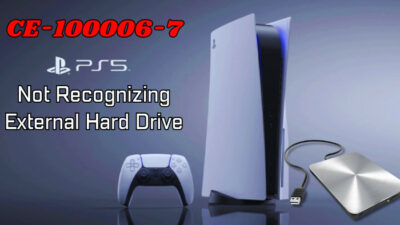Destiny 2 has gradually become famous since it was first released back in 2017, and it is one of the most optimized online games.
Season 19 dropped on December 6, titled Season of the Seraph. It came with a new dungeon and exciting new weapons and armor. But a quick glance on Reddit showed that the stuttering issues still remain for some players as before.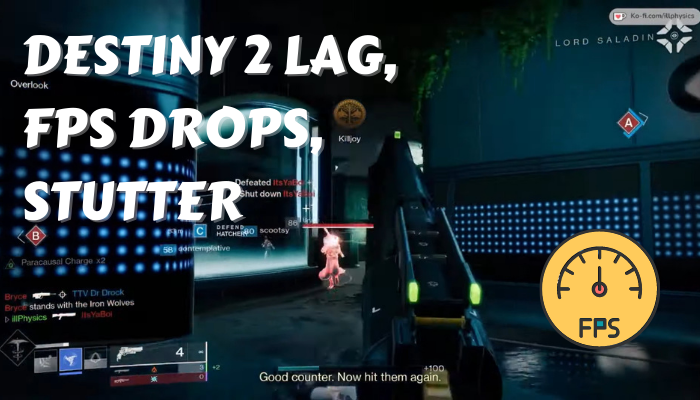 I will mostly focus on improving the frame rates on Destiny 2 in this article. So follow along with the fixes and make the multiplayer experience smoother.
I will mostly focus on improving the frame rates on Destiny 2 in this article. So follow along with the fixes and make the multiplayer experience smoother.
How to Fix Destiny 2 Lag and FPS Drops
There are quite a number of causes for your game to lag or drop frames. So you can do trial and error to find which one works for you.
Here are the methods to fix Destiny 2 lag and FPS drops:
1. Change Graphics Setting in Destiny 2
One of the best options for increasing your FPS is to lower some video settings from the menu, especially if you have a medium to lower-end computer.
Even there are some frame drops in high-end GPUs too. If you follow streamers on Twitch, you will notice that even they play at lower settings to get the maximum frame rates. I have seen them set every setting to low apart from Textures.
So don’t sweat about it that much. You may see some quality drop, but it will give you a significant FPS uplift.
Open up the game, go to Settings, and head over to Video. I assume that you have a decent mid-range GPU, and it can handle these settings quite easily.
These are the optimal video settings for Destiny 2:
- Window Mode: Fullscreen. There are benefits of having a windowed and borderless screen, but Fullscreen enables some FPS boost.
- Resolution: 1920 x 1080. You may have a higher-resolution monitor, but you need to have a good GPU and hardware to run on that resolution.
- V-sync: Off. Tuning it off helps to get some extra frames.
- Framerate Cap Enabled: Off If you want to cap frame rates, set the maximum fps to slightly lower than your monitor’s refresh rate. For a 144 Hz monitor, you can cap the maximum fps to 140.
- Field of View: 60-90. It is a personal preference but setting it to a maximum of 90 will help you get stable frame rates.
- Anti-Aliasing: SMAA. Sometimes FXAA makes the game blurry, so keeping SMAA is recommended. Keeping it Off will also boost frame rates in exchange for jagged edges.
- Screen Space Ambient Occlusion: Off
- Texture Anisotropy: Off
- Texture Quality: Medium
- Shadow Quality: Low. Shadow quality gives a lot of depth to the gameplay but needs more resources and sometimes drops some frames. So keeping it low helps a lot.
- Depth of Field: Low
- Environment Detail Distance: Medium
- Character Detail Distance: Medium
- Foliage Detail Distance: Low
- Foliage Shadows Distance: Low
- Light Shafts: Medium
- Motion Blur: Off. Keep it off to have clarity while sprinting.
- Wind Impulse: Off
- Render Resolution: 100%
- Chromatic Aberration: Off
- Film Grain: Off
Try these settings and see if you get better performance. In-game video settings impact the game frame rates mostly.
2. Clear Game Cache And Close Unnecessary Programs
Sometimes, damaged cache files cause frame spikes in Destiny 2, and if programs are running in the background, they may also consume resources. These may be potential causes for your Destiny 2 to drop frames, and it is really easy to clean these.
Here are the steps to Clear Destiny 2 Caches:
- Press the Windows key and type in Run.
- Open Run, type %appdata%, and hit the OK button.
- Find a folder named Destiny 2.
- Double-click the folder to enter and find the DestinyPC folder.
- Delete the folder to clear the cache.
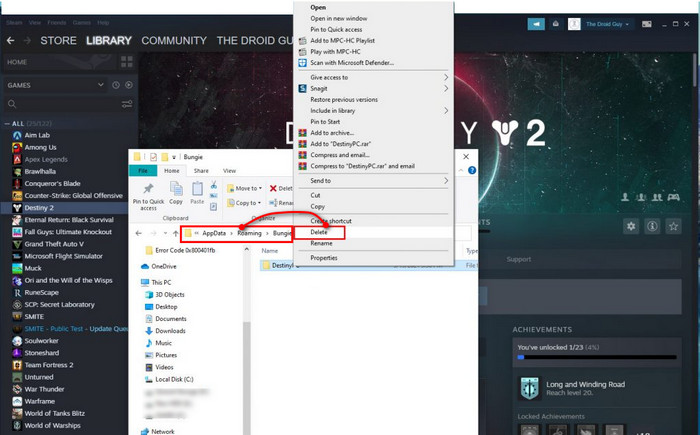
When you delete the cache, the game will automatically generate new cache files, and hopefully, it will help the game run smoothly.
Remember to close the apps running in the background while playing Destiny 2. Because sometimes the background apps consume a lot of resources, leaving the game to have fewer resources to run may result in an FPS drop.
Pro Tip: Make sure you have a stable internet connection. Destiny 2, an online game, needs a stable connection to work correctly, and there are times when lag or frame drops occur because of poor internet connection.
3. Delete Shader Cache
Shader cache is generated by the GPU driver program. As with any cache file, it can accumulate and get large in size. This can also give you a low fps on Destiny 2. So deleting it can improve the situation prevalent in your game.
Follow the sections to delete the shader cache as per your GPU manufacturer.
Nvidia GPU
If your pc has an Nvidia GPU, the driver software will generate some cache files for its proper working. This is mainly to speed up image and video rendering on your screen. If the same image is needed, the driver can use the files to generate it quickly.
There are two ways of deleting the Nvidia Shader Cache. You can automatically delete them using Disk cleanup or navigate to the specific cache folder and then delete the files manually.
First, you need to turn off Shader Caching from Nvidia’s Control Center.
To do that, open Nvidia Control Panel and go to 3D Settings > Manage 3D Settings > Shader Cache > Select Off and restart the computer.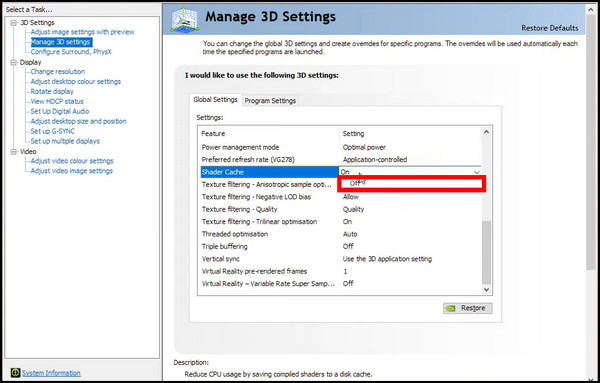
Now, let’s delete the shader cache files. The first way to to that is by using the Disk Cleanup app on Windows.
These are the steps to clean shader cache files using Disk Cleanup:
- Search Disk Cleanup on the Start Menu.
- Click on Open.

- Select DirectX Shader Cache from the list of files to be removed.
- Press Ok.
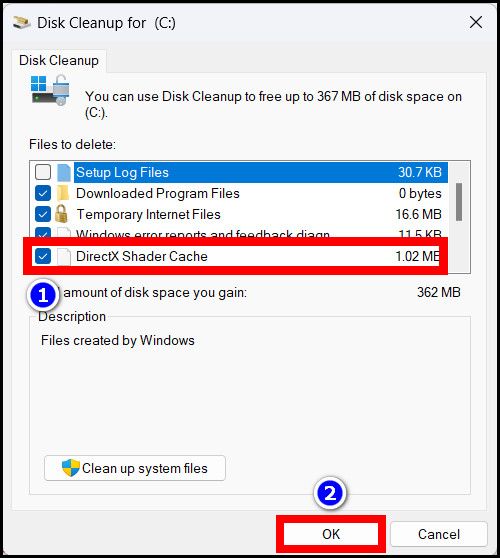
After the process completes, the shader cache files are deleted.
You can also clear the shader cache by navigating to Nvidia’s cache folder and deleting the files yourself. To do this, navigate to C\ProgramData\Nvidia Corporation\NV_Cache, select all files and delete them.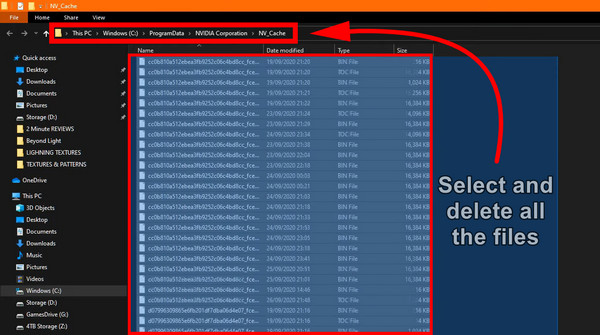
After removing the shader files, restart the computer. Turn on the Shader Cache from the Nvidia Control Panel again to finish this process.
AMD GPU
For AMD GPU, deleting the shader cache files is easier than for Nvidia. Just open the AMD Driver Software and clear the cache from there.
These are the steps to clear the shader cache on AMD GPU:
- Right-click on the desktop and open AMD Software.
- Click on the gear wheel at the top-right to open Settings.
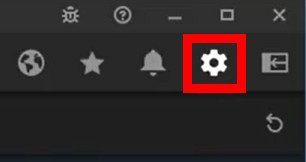
- Press the Graphics tab.
- Scroll down and expand the Advanced option.
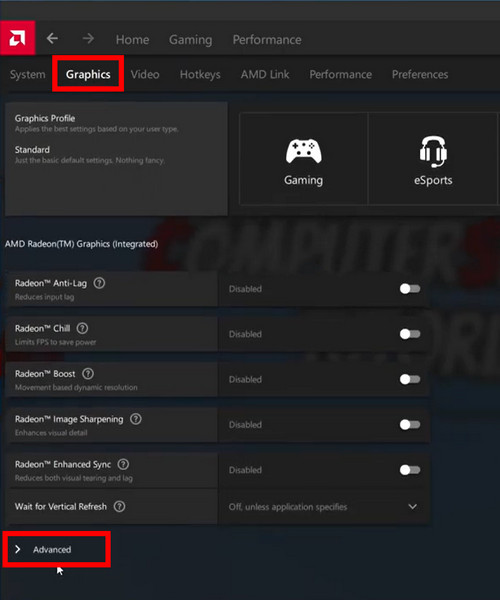
- Click on Reset Shader Cache and select Ok.
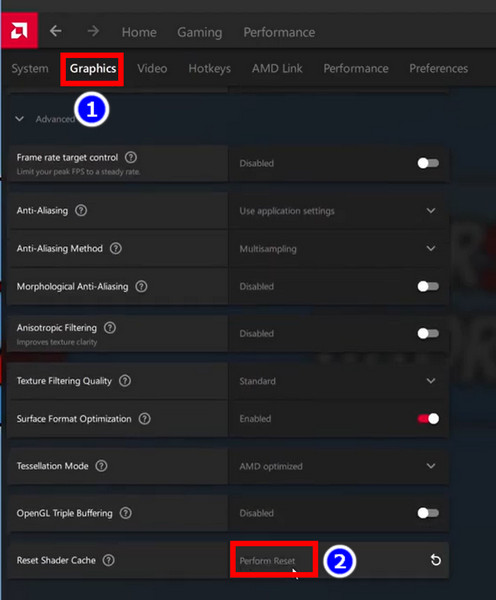
Restart your computer afterward.
4. Disable in-game overlays
These days, many software provides you with quick insights on games or chat functions by means of a piece of software that runs simultaneously with your games.
The Windows Game Bar shows you the FPS and valuable stats, whereas you can chat on Discord using its overlay add-on. But the downside of using these apps is that performance takes a hit and can affect the fps of Destiny 2.
So, do not use any in-game overlays during gaming sessions.
Below you can find the option to disable overlays for Windows Game Bar and Discord.
Windows Game Bar
Here are the steps to disable the Game bar on Windows 10/11:
- Open Settings.
- Click on Gaming.
- Turn the Game Bar toggle to off.
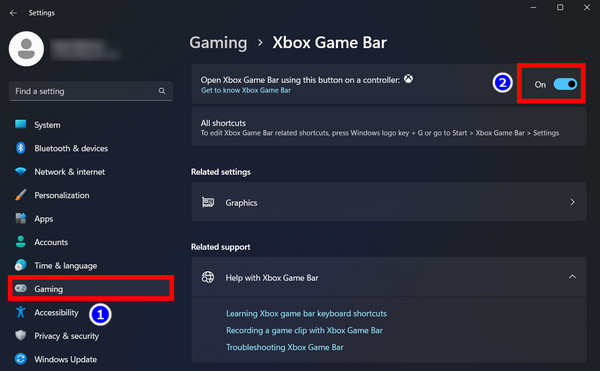
Now, the game bar will not pop up automatically whenever you launch a game.
Discord
These are the steps to disable Discord’s in-game overlay:
- Open Discord from the Start Menu or the Desktop.
- Click on the gear icon to open Settings.
- Go to Game Overlay under Activity Settings.
- Turn off the toggle next to Enable in-game overlay.
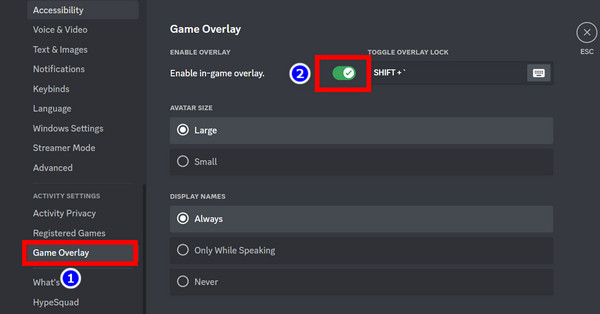
Now, exit any instances of Discord before firing up Destiny 2.
5. Disable Core Isolation (Windows 11)
With Windows 11, a highly advanced security feature called Core Isolation was introduced. This is a virtualization-based feature that prevents malicious programs from taking over processes critical to Windows.
And if it is turned on, expect to lose performance on games that rely heavily on CPU. Destiny 2 is fairly GPU-dependent, but even it loses frames if core isolation is turned on.
So, if you are on Windows 11 and have Destiny 2 in your library, go ahead and disable it.
These are the steps to disable Core Isolation on Windows 11:
- Open Windows Security from the Start Menu.
- Navigate to Device Security > Core Isolation.
- Turn the toggle to off next to Memory integrity.
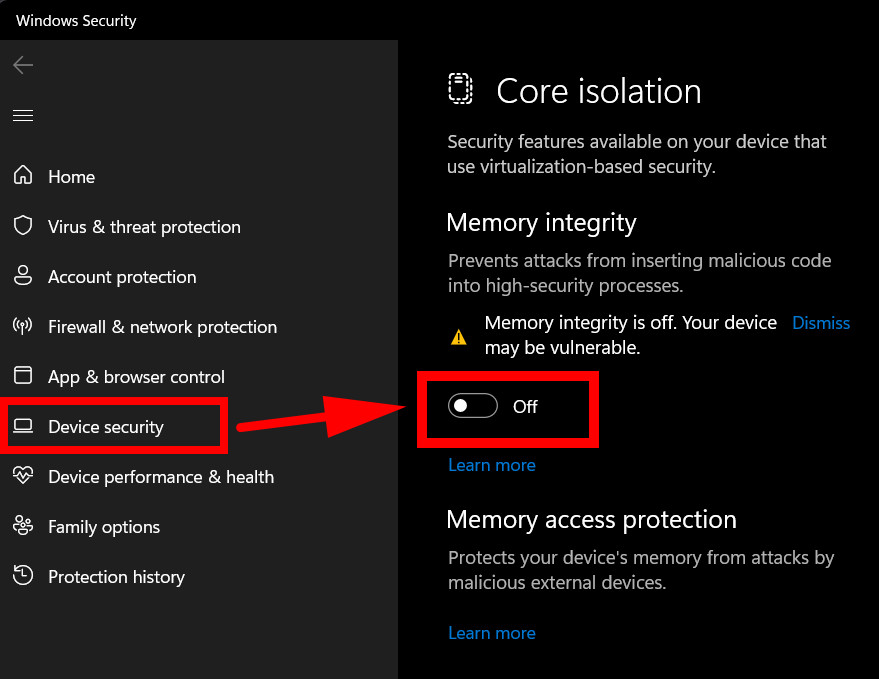
Now you should see a performance uplift the next time Destiny 2 is running on your system.
System Requirements for Destiny 2
Destiny has been around for a while. That means the game is optimized to run on a broad range of hardware. Check the minimum and recommended specs to see if you need an upgrade to help run it faster on your system.
| Minimum | Recommended | |
|---|---|---|
| Processor (Intel) | i5 3250 @ 3.5 GHz | i5 7400 @ 3.5 GHz |
| Processor (AMD) | FX 4350 @ 4.2 GHz | Ryzen 5 1600X @ 3.6 GHz |
| Graphics Card (Nvidia) | GTX 660/ 1050 2 GB | GTX 970 4 GB/ GTX 1060 6 GB |
| Graphics Card(AMD) | Radeon HD 7850 2 GB | R9 390 8 GB |
| RAM | 6 GB | 8 GB |
Additional Fixes for Destiny 2 Lag and FPS drop
Sometimes, the problem for frame drops are rooted to an old graphics driver or overclocking on your system. In that case, the earlier fixes may not work for you. In this section, the fixes will work not only for Destiny 2 but for many other games.
For the best performance on your games, keep the Windows and the graphics driver updated to the latest version.
1. Update Graphics Drivers
People often forget to keep their software up to date, and graphics drivers get the least attention for some reason. Manufacturers often update their graphics drivers to stay updated with the new games and software being released now and then.
Some updates may fix some issues but raise another bug. So There are continuous updates for graphics drivers. So if you love gaming, keep your drivers updated, which will give you the best experience every time.
To update the graphics drivers, you need to check your graphics card model and find look it up on the manufacturer’s official websites to look for updates. You may be using an Nvidia graphics card or an AMD GPU. So go to their website and see if there are any new updates on your specific card.
If you find a new version, download it and install it on your computer. Restart your computer, and the updates will be applied. Now try running Destiny 2 and look for lags. If it did not fix the issue, then move on to the following method.
2. Verify The Integrity Of Destiny 2 Game Files
One of the causes for the game to face frame drops or lag is corrupted or missing game files. You may find one or more files broken because of antivirus, which sometimes mistakes game files as viruses. So do check the integrity of the game files to eliminate the probability.
Here are the steps to check the integrity of Destiny 2 game files:
- Launch Steam on your computer.
- Go to Library from the top left and look for Destiny 2.
- Right-click on the game and select Properties.
- Navigate to the Local Files section and click on Verify Integrity Of Game Files. Wait as the process finishes.
- Close steam after the checking is complete.
Steam looks for defective game files in your computer, and if it finds one, it replaces it with the new one stored in the cloud. Now try playing the game and see if the game still lags or not. If the answer is yes, you may proceed to the next method.
3. Update Windows and Disable Overclocking
It may sound irrelevant, but windows updates often fix game frame drop issues. So consider checking on your OS updates and keep them up to date. There have been reports where players could have good and stable game performance after they updated their Windows.
Be it Windows 10 or Windows 11, keep an eye on your windows updates and keep them updated.
If you have been overclocking your GPU to dish out a little bit more performance from your GPU, then you should probably try to stop overclocking. Overclocking does give a performance boost but too much overclocking may backfire on you. So reset your GPU to default clock speed and see any improvement in your game.
Frequently Asked Questions
How do I stop lag spikes in Destiny 2?
To stop lag spikes, reduce the video settings on Destiny 2. Next delete the shader cache generated by your GPU. Re-install the GPU drivers and install the latest version from the manufacturers website.
Why does destiny 2 lag on PC?
Destiny 2 can lag if you set the video settings to too high. Also, additional programs running alongside the game can reduce memory and cause stuttering in the game.
Final Thoughts
After all this time, Destiny 2 has made a soft corner in my heart. So I strongly suggest you enjoy this game and apply these solutions if you face FPS drop or lag. As we all know lagging experience is extremely frustrating for gamers.
Hope that this article has helped you solve the lag and FPS issues with your Destiny 2. Feel free to share your thoughts and queries with us, and we will be happy to respond.
Happy gaming, everyone!

